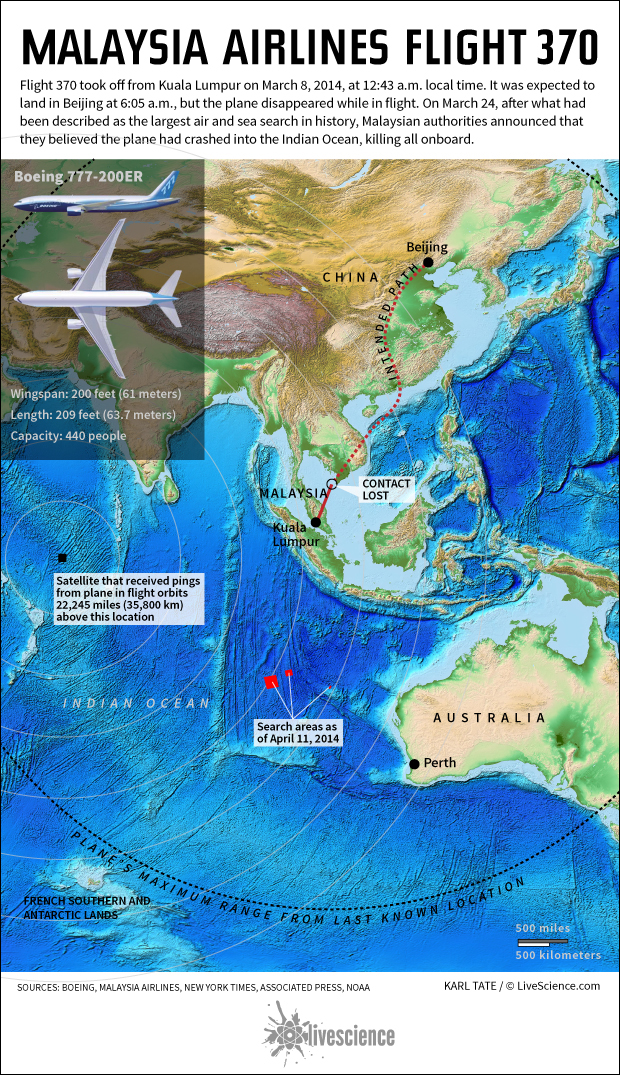Flight 370: Another Setback in Search for Missing Jetliner

The search for clues about the missing Malaysia Airlines jetliner continues over parts of the Indian Ocean, despite another setback over the weekend, when floating objects thought to be possible debris from the plane turned out to be discarded fishing gear.
An Australian search plane spotted at least four orange objects measuring more than 6 feet (1.83 meters) yesterday (March 30), CBS News reported. The floating objects were located and retrieved by Australian and Chinese ships, but are not believed to be linked to the missing Malaysia Airlines Flight MH370, officials with the Australian Maritime Safety Authority (AMSA), which is leading the international search operation, said in a statement. Rather, the objects are likely fishing equipment and other flotsam, AMSA officials said. [Facts & Timeline About Malaysia Flight 370]
Meanwhile, a robotic submarine is being deployed to try to locate the aircraft's flight recorders, including the plane's black box, which has a roughly 30-day battery life, according to CBS News.
Yet, after weeks of searching the waters off the west coast of Perth, Australia, investigators have come up empty so far.
Search ships were unable to locate potential debris seen last week in various satellite images, and most credible leads to date have proven false. Still, Australia Prime Minister Tony Abbott said today (March 31) that search efforts for the lost plane, and the 239 passengers onboard, will continue indefinitely.
Last week, officials shifted the search area nearly 700 miles north, to a patch of ocean located about 1,150 miles (1,850 kilometers) west of Perth. Investigators changed the area of focus after new studies indicated the plane was likely traveling faster, and thus burning more fuel than previously thought. This means the Boeing 777 jet may have run out of fuel and crashed sooner than had been projected.
"This is an extraordinarily difficult exercise … We are searching a vast area of ocean, and we are working on quite limited information," Abbott said, according to CBS News. "If this mystery is solvable, we will solve it."
Get the world’s most fascinating discoveries delivered straight to your inbox.
While AMSA is coordinating the search operation, planes and ships from the United States, Australia, New Zealand, Japan, China and South Korea are also involved.
The Malaysia Airlines jet has been missing since March 8, when it mysteriously disappeared during a scheduled flight from Kuala Lumpur to Beijing. Ongoing investigations have concluded that the plane's last-known position was in the middle of the Indian Ocean, but the exact whereabouts of the aircraft, and its passengers, remain unknown.
Follow Denise Chow on Twitter @denisechow. Follow Live Science @livescience, Facebook & Google+. Original article on Live Science.

Denise Chow was the assistant managing editor at Live Science before moving to NBC News as a science reporter, where she focuses on general science and climate change. Before joining the Live Science team in 2013, she spent two years as a staff writer for Space.com, writing about rocket launches and covering NASA's final three space shuttle missions. A Canadian transplant, Denise has a bachelor's degree from the University of Toronto, and a master's degree in journalism from New York University.


